Learn English with Jazz Chants
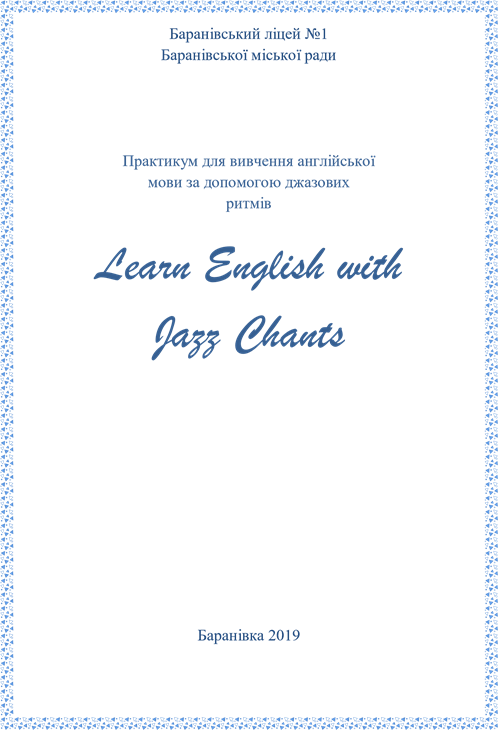
Схвалено науково – методичною радою Баранівського ліцею №1( протокол №3 від 16.12.2019)
Укладач: Старушко Наталія Валентинівна, вчитель англійської мови Баранівського ліцею №1, «спеціаліст вищої категорії», «старший учитель»
Рецензент: Присяжнюк Наталія Володимирівна, заступник директора з навчально – виховної роботи Баранівського ліцею №1, вчитель англійської мови
Даний посібник містить комплекс завдань для розвитку аудіювання, читання, письма та говоріння на уроках англійської мови. Джазові ритми, які є основою для опрацювання лексичного та граматичного матеріалу, відповідають віковим особливостям та інтересам учнів. Комплекс вправ допомагає учням у формуванні навичок в усіх видах мовленнєвої діяльності.
Перевагою посібника є використання новітніх інтерактивних технологій у вигляді мобільного додатка, який представляє джазовий ритм в оригінальному звучанні і дає можливість формувати правильну вимову та інтонацію сучасної англійської мови. Доступ до мобільного додатка відкривається через QR – код біля кожного джазового ритму.
Практикум рекомендується вчителям англійської мови для роботи з учнями ЗЗСО та відповідає рівню А2 Загальноєвропейських рекомендацій з мовної освіти
Передмова
Даний посібник призначений для учнів ЗЗСО і націлений на розвиток та закріплення навичок аудіювання, читання, письма та говоріння, набутих школярами відповідно до чинної навчальної програми з іноземних мов та загальноєвропейських рекомендацій з мовної освіти, що відповідає рівню А2.
Навчальний матеріал спрямований на вивчення англійської мови за допомогою використання джазових ритмів. Джазовий ритм – автентичний текст, який є яскравим прикладом розмовної англійської мови. Використання джазових ритмів на уроках направлено на розвиток, у першу чергу, сприйняття мовного матеріалу на слух, а також на вивчення лексичних та граматичних структур, характерних англійській розмовній мові, інтонацію,темп та емоції, притаманні носіям мови.
Кожен джазовий ритм є основою для лексичної та граматичної роботи. Керолін Грехем, яка є автором всіх ритмів, створила вірші, які звучать на фоні джазової музики, з метою вивчення англійської мови як другої іноземної.
Опрацювання розпочинається з прослуховування джазового ритму. Школярі читають та повторюють за вчителем ритм для правильного відтворення розмовних кліше. Вчитель може задати прості запитання на сприйняття або зробити частковий переклад, щоб переконатися, що учні розуміють текст.
Післятекстова робота передбачає виконання вправ, які спрямовані на закріплення лексичного та граматичного матеріалу певного джазового ритму та мовного явища в цілому. На завершальному етапі здобувачі освіти тренують мовний матеріал у діалогах та рольових іграх. Перевагою посібника є використання новітніх інтерактивних технологій у вигляді мобільного додатка, який представляє джазовий ритм в оригінальному звучанні і дає можливість формувати правильну вимову та інтонацію сучасної англійської мови. Доступ до мобільного додатка відкривається через QR – код біля кожного джазового ритму.
Практикум рекомендується вчителям англійської мови для роботи з учнями ЗЗСО та відповідає рівню А2 Загальноєвропейських рекомендацій з мовної освіти.
Матеріали посібника та електронного додатка стимулюють розвиток пізнавальних інтересів учнів та сприяють підвищенню мотивації до вивчення англійської мови.
Зміст
Передмова ...................................................................................... 3
Pete Eats Meat ................................................................................. 6
Trish Eats Fish ................................................................................. 7
Marian’s a Vegetarian ...................................................................... 9
Habits ............................................................................................ 12
Couch Potato ................................................................................. 14
What’s She Doing? ........................................................................ 16
When Are You Leaving? ............................................................... 18
When Do You Usually Have Breakfast? ........................................ 20
Yesterday It Rained and Rained ..................................................... 22
Are You French? ........................................................................... 24
Checklist ....................................................................................... 26
Checking In at the Airport.............................................................. 28
Her Laundry Is in the Laundry Bag ................................................ 29
Saturday Morning .......................................................................... 31
What’s the Matter with Bob? ......................................................... 33
Are You Going to Go with Joe? ..................................................... 36
What Should I Do? ........................................................................ 38
Black Socks Never Get Dirty ......................................................... 40
I Got a Fax from Max .................................................................... 41
Список використаних джерел …………………………………...46
 Pete Eats Meat (by Carolyn Graham)
Pete Eats Meat (by Carolyn Graham)
Pete eats meat
He doesn’t eat fish.
Pete likes meat, red meat.
Meat for breakfast.
Bacon, sausage.
Meat for lunch.
Ham, sandwiches.
 Meat for dinner. Meatloaf, meatballs. Pete loves meat Red meat.
Meat for dinner. Meatloaf, meatballs. Pete loves meat Red meat.
Exercise 1. Listen and repeat.
Exercise 2. Listen to the chant and choose all the pictures of food Pete eats.

Exercise 3. Complete the sentences:
Pete eats…
He likes…
He doesn’t eat… He has… for lunch.
He has… for breakfast.
Exercise 4. Make up sentences.
![]()
![]()
![]() fish eats meat for dinner.
fish eats meat for dinner.
Pete has ham sandwiches for breakfast. doesn’t like meatloaf meatballs bacon sausages
Exercise 5. Substitute the jazz chant and speak about your friend’s preferences in food.
 Trish Eats Fish (by Carolyn Graham)
Trish Eats Fish (by Carolyn Graham)
Trish eats fish.
She doesn’t eat meat.
Trish loves shellfish.
Shrimp cocktail.
Fresh shellfish.
Clams, scallops, oysters on the half – shell, lobster stew.
 Trish eats shellfish.
Trish eats shellfish.
Fresh shellfish.
Trish loves shellfish.
I do, too.
Exercise 1. Listen and repeat.
 Exercise 2. Match the pictures with the names of sea food.
Exercise 2. Match the pictures with the names of sea food.
1. Shellfish
2. Shrimp
3. Scallop
4. Lobster
Exercise 3. Respond to the statements.
I love shellfish. – I do, too.
I like lobster stew. –
I like scallops. – Pete likes oysters. – Mary likes shrimp cocktail. –
Exercise 4. Make the sentences negative.
1. Bill eats lobsters every day. – Bill doesn’t eat lobsters every day.
2. Bob likes oysters. – 3. Ann eats salmon every day. –
4. Dan loves shrimp cocktail. –
5. Nick eats shellfish on Sundays. – Exercise 5. Answer the questions.
1. Do you like seafood?
2. Do you often eat lobsters\oysters\shellfish\scallops?
3. Do you find it useful\expensive to eat seafood?
4. How tasty is it for you?
Marian’s a Vegetarian (by Carolyn Graham)
 Marian’s a vegetarian.
Marian’s a vegetarian.
She doesn’t eat meat.
She doesn’t eat fish.
Marian’s a vegetarian.
She eats vegetables every day.
Broccoli pizza, mushroom stew.
Garlic soup with onions too.
Eggplant, carrots, cauliflower pie.
She loves vegetables.
So do I!
Exercise 1. Listen and repeat.
Exercise 2. Read the chant, circle the vegetables Marian likes and write them down.
 Mushroomcaulifloweronionbroccoligarliccarroteggpl
Mushroomcaulifloweronionbroccoligarliccarroteggpl
Exercise 3. Respond to the statements.
I like broccoli – So do I.
I like carrots –
I like beets – I like garlic –
Exercise 4. Find someone who…
…likes broccoli pizza.
… eats mushroom stew.
… loves eggplant, carrots.
… eats garlic soup.
… eats vegetables every day.
Exercise 5. Write your answers using affirmative and negative forms of the Present Simple. Example: Nina likes vegetables.
Roman doesn’t like mushroom stew.
Exercise 6. Do you find Marian’s diet boring?
• exciting
• useful
• dangerous
• harmful
 Habits (by Carolyn Graham)
Habits (by Carolyn Graham)
Bob gets up at six o’clock.
He never wakes up late.
He always gets up early.
He never sleeps till eight.
 He always drinks his coffee black.
He always drinks his coffee black.
He never uses cream.
He rarely has a sleepless night.
He never has a dream.
He does his breakfast dishes, then puts them on the shelf,
walks around the kitchen humming to himself.
Exercise 1 Listen and repeat.
Exercise 2. Say what Bob does regularly, rarely and never.
![]() always
always Bob rarely never
Exercise 3. Substitute the jazz chant with the pronouns she and her.
Exercise 4.Put the words in the correct order.
1. gets up\always\Bob\seven\at\o’clock.
2. drinks\ never\Mary\tea.
3. has\ Ben\rarely\breakfast\ 6 o’clock\ at.
4. always\ Nick\ dishes\ does.
5. goes\to\ never\ Nina\school\Sundays\on.
Exercise 5. Ask your partner and tick ( ![]() ) the answers.
) the answers.
• Do you always get up at 6 o’clock? Do you always wake up late?
• How often do you drink black coffee?
• How often do you do breakfast dishes?
• How often do you have a sleepless night?
• Do you walk around the kitchen humming to yourself?
|
always |
rarely |
never |
|
|
|
|
|
|
|
|
|
|
|
|
|
|
|
|
|
|
|
|
|
|
|
|
Exercise 6. Speak about your friend’s habits using the adverbs of frequency (always, never, rarely).
Øgets up early;
Ødoes the washing up;
Ødoes homework;
Øsleeps till eight;
Øwakes up late; Ø has a sleepless night.
Couch Potato (by Carolyn Graham)
 Do you like to swim? Do you like to ski?
Do you like to swim? Do you like to ski?
I’m a couch potato. I like TV.
Does he like to swim? Does he like to ski?
He’s a couch potato.
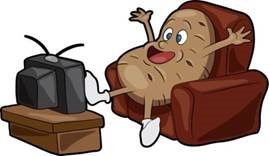 He likes TV. He doesn’t like to swim. He doesn’t like to ski.
He likes TV. He doesn’t like to swim. He doesn’t like to ski.
He’s a coach potato. He likes TV.
Exercise 1. Listen and repeat.
Exercise 2. Fill in Do or Does.
…you go to school every day?
…Olena like pizza?
…your brother ride a bike?
…your father drive a car?
…you like to swim?
Exercise 3.Work in pairs. Ask your partner the following questions and tick the answers yes or no.
![]()
 Do you like to sing?
Do you like to sing?
Do you like to dance? Do you study well?
Do you play football?
Do you play the guitar?
![]() Do you speak Spanish?
Do you speak Spanish?
Exercise 4. Write your partner’s answers using the complete sentences.
He\ she doesn’t like to sing.
Exercise 5. Prove that your friend is a coach potato\ is not a coach potato(he/she likes or doesn’t like to do). to play the violin to ride a bike to play chess
 friend to swim
friend to swim
to dance
to take photos to paint
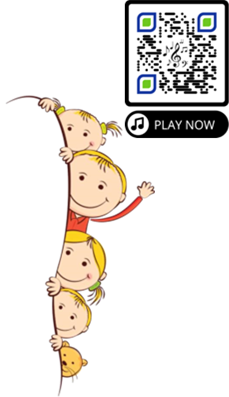 What’s She Doing? (by Carolyn Graham) What’s she doing?
What’s She Doing? (by Carolyn Graham) What’s she doing?
She’s writing a book.
What’s he doing?
He’s learning to cook.
What are you doing?
I’m learning to drive. What are they doing?
They are learning to dive.
What’s Dan doing?
He’s writing a letter.
What’s Fran doing?
She’s knitting a sweater.
Exercise 1. Listen and repeat.
Exercise 2. Make up sentences using the table.
![]()
![]() I writing a book.
I writing a book.
She am learning to cook.
He is learning to drive.
They are writing a letter.
We knitting a sweater.
Exercise 3. Open the brackets and write the sentences using the Present Continuous.
1. I (to learn) French.
2. Nick (to write) the essay.
3. Mary (to play) the guitar.
4. Children (to cry) in the kitchen.
5. Boys (to swim) in the river.
 Exercise 4. Look at the pictures and answer the questions.
Exercise 4. Look at the pictures and answer the questions.
1.What’s Dan doing?
2.What’s Kate doing?
3.What’s Bill doing?
4.What’s Ann doing?
 When Are You Leaving? (by Carolyn Graham) When are you leaving?
When Are You Leaving? (by Carolyn Graham) When are you leaving?
I’m leaving in July.
How are you going?
I’m planning to fly.
Where is Bob going?
He’s going to Spain.
 How is he going?
How is he going?
He’s taking a plane.
Are you leaving next summer?
I’m leaving next fall.
Are you going with Boby?
I’m going with Paul.
Exercise 1. Listen and repeat.
Exercise 2. Match the questions with the answers.
1.When are you leaving?
2.How are you going?
3.How is Bob going?
4.Where is Bob going?
a) He is going to Spain.
b) He’s taking a plane.
c) I’m leaving in July.
d) I’m planning to fly.
Exercise 3. Complete the sentences using the Present Continuous for personal arrangements.
1) I (play) football after school today.
2) My friends (have) a party next week.
3) Mary (not come) with us to the rock concert on Saturday.
4) Peter (not go) to Italy for his holiday.
5) (She go) to the school gym on Monday? 6) We (get) a new computer tomorrow.
Exercise 4. Respond to the statements using the Present Continuous.
A: Have you ever been to South America?
B: No, never. I’m going there in October.
1. It’s a nice recipe of pizza. – 2. Bob plays the guitar perfectly. – 3. Sue is fond of climbing. –
4. My brother is crazy about riding a motorbike. –
5. Our holidays are in June. –
Exercise 5. Arrange to do something together this afternoon. Agree on the best time.
Example: A: Are you doing anything this afternoon?
B: I’m having a guitar lesson at 6 p.m.
When Do You Usually Have Breakfast? (by Carolyn Graham)
 When do you usually have breakfast?
When do you usually have breakfast?
I usually have breakfast at eight.
What time do you get to the office?
I’m usually a little bit late.
What do you have for breakfast?
I usually have coffee and toast.
How long does it take to fix breakfast?
It takes ten minutes at most.
Exercise 1. Listen and repeat.
Exercise 2. Match the questions with the answers.
1. When do you usually have breakfast?
2. What do you have for breakfast?
3. What time do you get to the office?
4. How long does it take to fix breakfast?
a) I’m usually a little bit late.
b) I usually have breakfast at eight.
c) I usually have coffee and toast.
d) It takes ten minutes at most.
Exercise 3. Read the chant and circle the correct word.
![]() I usually have tea\ juice\ coffee and toast.
I usually have tea\ juice\ coffee and toast.
I usually have lunch\ breakfast\ dinner at eight.
![]() When do you usually have breakfast\ dinner\ supper?
When do you usually have breakfast\ dinner\ supper?
![]() What time do you get to the club\ shop\ office? Exercise 4. Role play the chant.
What time do you get to the club\ shop\ office? Exercise 4. Role play the chant.
Exercise 5. Read and circle the sentences which are true about you.
1. Usually I have breakfast at eight.
2. I usually have breakfast seven.
3. I’m usually late for school.
4. I’m never late for work.
5. I usually have porridge for breakfast.
6. I usually have coffee and toasts for breakfast.
7. It takes ten minutes to fix breakfast.
8. It takes twenty minutes to get to school.
Exercise 6. Work in pairs. Ask each other what you usually do in the morning.
 Yesterday It Rained and Rained
Yesterday It Rained and Rained
(by Carolyn Graham)
Yesterday it rained and rained.
Yesterday it poured.
Yesterday the streets were wet.
The children all were bored.
The people stayed indoors all day.
There wasn’t much to do.
At last it stopped. We stepped outside.
A rainbow! There! For you!
Exercise 1.Listen and repeat.
Exercise 2. Complete the sentences:
![]() The weather was…
The weather was…
It…
The children were…
They…
The people…
The streets were…
Exercise 3. Complete the table with regular verbs.
I II
|
to rain |
|
|
|
poured |
|
to stay |
|
|
|
stopped |
|
|
stepped |
|
to travel |
|
Exercise 4. Circle the correct form of the verb to be:
1. Cleopatra was\were an Egyptian queen.
2. The Beatles was\ were pop musicians from Liverpool.
3. T. Shevchenko was\ were a Ukrainian poet.
4. G. Washington was\ were the first American president.
5. Marie and Pierre Curie was\ were famous scientists.
Exercise 5. Say what people did after the rain yesterday:
o organized tennis competition; o played games in the park;
o organized a concert of traditional music; o visited old friends; o helped parents in the garden.
Are You French? (by Carolyn Graham) Are you French?
 No? I’m not. I’m Italian.
No? I’m not. I’m Italian.
Is he Korean?
No, he’s not. He’s Japanese.
Is she Spanish?
No, she’s not. She’s Venezuelan.
 Are they Indonesian?
Are they Indonesian?
No, they are not. They are Taiwanese.
Exercise 1. Listen and repeat.
Exercise 2. Match the countries with the nationalities.
1. France a) Venezuelan
2. Venezuela b) Taiwanese
3. Japan c) French
4. Italia d) Japanese
5. Korea e) Korean
6. Taiwan f) Italian
Exercise 3. Complete the sentences with the words.
1. I’m from France. I’m …
2. She’s from Japan. She’s …
3. He’s from Italia. He’s …
4. We’re from Korea. We’re …
5. They’re from Venezuela. They’re …
6. She’s from Taiwan. She’s … Exercise 4. Answer the questions.
![]() Are you French?
Are you French?
Are you Chinese?
Is your friend Spanish?
Are your parents Canadian? Is your uncle Australian?
Exercise 5. Look at the pictures and say what the nationalities they are.


This is Andrew. This is Simon. This is Tom.
 He is… He is… He is… Checklist (by Carolyn Graham) Are the lights on?
He is… He is… He is… Checklist (by Carolyn Graham) Are the lights on?
Yes, they are.
Is the blackboard clean?
Yes, it is.
Is the chalk on the blackboard?
Yes, there is.
Are the students here?
Yes, they are.
 Is the teacher here?
Is the teacher here?
Yes, she is.
Is it time to begin?
Yes, it is.
Exercise 1. Listen and repeat.
Exercise 2. Read the chant and put the sentences in order.
a. It’s time to begin.
b. There is chalk on the blackboard.
c. The students are here.
d. The blackboard is clean.
e. The teacher is here.
f. The lights are on. (1)
Exercise 3. Match the questions with the answers.
Is your town big? Yes, there is.
![]() Is there a park in your town? No, there are not.
Is there a park in your town? No, there are not.
Are the pencils long? Yes, it is.
Are there pens in the pencil – box. Yes, they are.
Is your brother a student? Yes, he is.
Exercise 4. Make up questions to the answers.
……….. – Yes, it is.
……….. – Yes, she is.
……….. – Yes, they are.
………… - Yes, he is.
………… - Yes, we are.
Exercise 5. Role play the chant.
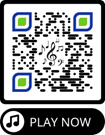 Checking In at the Airport (by Carolyn
Checking In at the Airport (by Carolyn
Graham)
Are the bags all here?
Yes, they are.
Are the tags on the bags?
Yes, they are.
Where’s the big black bag?
 It’s there, near the door.
It’s there, near the door.
Where are the tickets?
They’re there, in your hand.
Where are the tags?
They’re there, on the bags.
Exercise 1. Listen and repeat.
Exercise 2. Listen and tick (![]() ) the correct sentence.
) the correct sentence.
a) The bags are all here.
b) The bags are all there.
a) The tags are on the boxes.
b) The tags are on the bags.
a) The big bag is black.
b) The big bag is red.
a) The tickets are in the bag.
b) The tickets are in the hand.
Exercise 3. Answer the questions.
§ Is your bag black?
§ Is your pen blue?
§ Are your shoes green?
§ Where is your book?
§ Where is your day book?
Exercise 4. Listen to your teacher, read the sentences below. Listen carefully to the noun ending. If the noun is singular, say “one”, if the noun is plural, say “two”.
1. The book’s here.
2. The books are there.
3. The girls are nice.
4. The girl’s nice.
5. 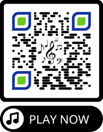 The plane’s fast.
The plane’s fast.
6. The planes are fast.
Her Laundry Is in the Laundry Bag (by
Carolyn Graham)
Her laundry is in the laundry bag.
Her gloves are in the drawer.
Her raincoat is in the closet.
Her shoes are on the floor.
His jacket is on the hanger.
 His necktie is on the door.
His necktie is on the door.
His pants are in the closet.
His shorts are on the floor.
Exercise 1. Listen and repeat.
Exercise 2. Listen and find the nouns in singular and plural. Make up your own sentences with them.
Example: The gloves are black.
The raincoat is wet.
Exercise 3. Fill in the correct pronoun.
![]() She has a jacket. … jacket is warm.
She has a jacket. … jacket is warm.
He has a necktie. … necktie is long.
Mary has shorts. … shorts are yellow.
Bill has pants. … pants are dirty.
Alice has jeans. … jeans are blue.
Exercise 4. Choose the preposition.
1) The dress is in\on the wardrobe.
2) The cup is in\on the table.
3) The pan is in\on the cooker.
4) The sandwich is in\on the oven. 5)The clothes are in\on the closet.
Exercise 5. Speak about your favourite clothes. Use the words: casual, comfortable, stylish, nice, informal. Example : I like jeans. They are stylish.
 Saturday Morning (by Carolyn Graham) First I called my mother.
Saturday Morning (by Carolyn Graham) First I called my mother.
We talked for an hour.
Then I played tennis, went home and took a shower.
I went to the kitchen,
made a cup of tea,
took out my English book,
and studied carefully.
 I finished all my homework without a mistake.
I finished all my homework without a mistake.
Then I decided to take a little break.
I sat down for a minute to watch TV,
fell asleep, and woke up at three.
Exercise 1. Listen and repeat.
Exercise 2. Read the chant and circle the regular verbs in red and irregular verbs in blue. Then write two lists.
|
z |
t |
c |
a |
l |
l |
p |
o |
f |
|
t |
a |
l |
k |
n |
l |
l |
p |
d |
|
w |
k |
g |
m |
l |
f |
a |
l |
l |
|
a |
e |
e |
a |
g |
r |
y |
c |
c |
|
t |
t |
s |
k |
o |
s |
i |
t |
b |
|
c |
y |
d |
e |
c |
i |
d |
e |
m |
|
h |
s |
t |
u |
d |
y |
x |
k |
r |
Exercise 3. Join two words to make word – combinations .
![]() played homework went mum made asleep finished a shower fell home took tennis called a cup of tea Exercise 4. Make up sentences with the word combinations.
played homework went mum made asleep finished a shower fell home took tennis called a cup of tea Exercise 4. Make up sentences with the word combinations.
Example: I made a cup of tea for my sister Sue yesterday.
Exercise 5. Open the brackets and write the sentences.
1) Children (to play) football yesterday.
2) I (to study) well at school.
3) She (to make) a mistake in the dictation.
4) They (to go) to the UK last winter. 5) I ( to wake up) early yesterday.
6) My father (to finish) his work at 6 o’clock.
Exercise 6. Say what you did yesterday.
What’s the Matter with Bob? (by Carolyn Graham)
What’s the matter with Bob?
 He lost his job.
He lost his job.
What’s wrong with Sue?
She got the flu.
What’s the matter with Jack?
His check came back.
What’s wrong with Bill?
 He got a chill.
He got a chill.
What’s wrong with Peg?
She broke her leg.
What’s happened to Rose?
She bumped her nose.
Exercise 1. Listen and repeat.
Exercise 2. Use Past Simple to make up sentences.
Bob (to loose) his job.
Sue (to get) the flu.
Jack (to get) his check back.
Bill (to get) a chill.
Peg (to break) her leg.
Rose (to bump) her nose.
Exercise 3. Work in pairs. Ask and answer the questions.
Example: What’s the matter with Mary?
She lost her key.
Mary – lost her key.
Pete – forgot his luggage.
Marian – missed the train.
Hannah – had a toothache.
Martin – broke the car.
Joanna – got upset stomach.
Exercise 4. Find the opposites. Make up sentences using the Past Simple.
![]() to loose to be on time to break to come back to be late to repair to go away to find to meet to disappear to appear to part
to loose to be on time to break to come back to be late to repair to go away to find to meet to disappear to appear to part
Exercise 5. Read and tick (![]() ) the correct sentence.
) the correct sentence.
1. Bob lost his keys. Bob lost his job.
2. Sue got the flu.
Sue got the call.
3. Peg broke her leg.
Peg broke her arm.
4. Rose bumped her nose.
Rose bumped her forehead.
5. Jack got his check back. Jack got his bill back.
 Are You Going to Go with Joe? (by
Are You Going to Go with Joe? (by
Carolyn Graham)
Are you going to go with Jo?
No.
Joe’s going to go with Sue.
Oh, who’s going to ride with Bill?
Will.
 Are you going to go with Bess?
Are you going to go with Bess?
Yes.
Who’s going to stay with Fay?
Ray.
Who’s going to ride with us?
Gus.
Exercise 1. Listen and repeat.
Exercise 2. Use the cues to make up sentences.
1) Joe \ to go with Sue.
2) Will \ to ride with Bill.
3) I \ to go with Bess.
4) Ray \ to stay with Fay. 5) Gus \to ride with us.
Exercise 3. Use to be going to to express an intention to do something. Write questions.
Example: You like writing essays. – Are you going to be a journalist?
1. I like painting. (you \to study art)
2. My friend is interested in computer. (he \to study computers at university)
3. Nick is a good guitar player. (he \to join a rock band)
4. It’s Christmas morning. (mum \to cook a turkey)
5. John’s been sick. (mum and dad \to phone the doctor)
Exercise 4. Complete the sentence and speak about your intentions.
It’s December and this is what I am going to do in the New Year:
First of all I… to go to the gym
more often;
Secondly I…
• to eat less;
Thirdly I…
• to do sports to pay more exercises more; attention to my
• to work harder at family; school; to redecorate my
 room. What Should I Do? (by Carolyn Graham) What should I do?
room. What Should I Do? (by Carolyn Graham) What should I do?
You ought to ask Sue.
What should we wear?
You ought to ask Cher.
 What should he say?
What should he say?
He ought to ask Ray.
Who should she tell?
She ought to ask Nill.
Exercise 1. Listen and repeat.
Exercise 2. Use ought to for giving advice.
Exercise 3. Complete the sentences with the words given below.
consult a doctor, buy a present, use a dictionary, clean it, be in bed
1. It’s a difficult exercise, you ought to …
2. It’s late, children ought to…
3. The child is coughing, you ought to …
4. Your room is dirty, you ought to…
5. It’s our father’s birthday next week, we ought to…
Exercise 4. Match the situation (1-5) with the advice
(a-e)
1. Linda has failed the exam.
2. Mr. and Mrs. Smith are going abroad this weekend.
3. David has passed his driving test.
4. John is fifteen today.
5. It looks like raining.
a) He should drive very carefully at first.
b) They should take a camera with them.
c) She should work harder.
d) You should take an umbrella.
e) He should invite his best friends to the party.
 Black Socks Never Get Dirty (by Carolyn Graham) Black socks never get dirty.
Black Socks Never Get Dirty (by Carolyn Graham) Black socks never get dirty.
The longer you wear them, the blacker they get.
Sometimes I think I should
wash them
but something inside me keeps saying not yet.
Exercise 1. Listen and repeat.
Exercise 2. Complete the table by filling in the adjectives, comparatives and superlatives.
|
adjective |
comparative |
superlative |
|
old |
older |
the oldest |
|
|
longer |
|
|
|
|
the tallest |
|
|
|
the biggest |
|
|
hotter |
|
|
|
faster |
|
Exercise 3. Choose the correct form of the adjective.
1. John is tall\taller\the tallest than Bill.
2. He is rich\richer\ the richest than his neighbour.
3. He is smart\ smarter\ the smartest in our form.
4. My older\elder\the eldest sister is a journalist.
5. He is the older\oldest\eldest member of the club.
Exercise 4. Answer the questions.
? Who does washing in your family?
? Do you have any chores at home?
? Who usually cleans your room?
?Do you have a pet at home? Who takes care of it?
? Who usually cooks in your family?
?Do you help your parents to look after your younger sisters or brothers?
 I Got a Fax from Max (by Carolyn Graham) I got a fax from Max!
I Got a Fax from Max (by Carolyn Graham) I got a fax from Max!
What did he say?
He said he was going to the zoo today.
 I got a call from Paul.
I got a call from Paul.
What did he say?
He said he was leaving for L.A. today.
I got a cable from Mabel.
What did she say?
She said she was coming for a visit in May.
What a surprise! A fax from Max!
What a kick! A call from Paul!
What a shock! A cable from Mabel.
Exercise 1. Listen and repeat.
Exercise 2. Write original words.
Example: Max said: “I am going to the zoo today.” Paul said:
Mabel said:
Exercise 3. Report speech sentences:
Sam Nick and Mary

Exercise 4. Respond to the statements using the exclamations.
What a surprise! What a kick! What a shock!
1. I lost a lot of money.
2. I found a strange thing in the street.
3. I read a wonderful book last night.
4. He gave me a present.
5. I saw a terrific movie last night.
6. We ate something delicious yesterday.
Список використаних джерел
1. Гальскова Н.Д. Теорія навчання іноземних мов: Навч. Посібник\ Н. Гальскова. Гез. – М.: Academia, 2006.
2. Державний стандарт базової і повної середньої освіти: постанова КМУ № 1392 від 23листопада 2011 року Про затвердження Державного стандарту базової і повної загальної середньої освіти.
3. Методика викладання іноземних мов у середніх навчальних закладах: Підручник / Під ред. С.Ю.Ніколаєвої. – К.: Ленвіт, 2002.
4. Про освіту: закон України від 05. 09. 2017 № 2145 – VІІІ. – Рекомендація 2006/962/ЄС
Європейського Парламенту та Ради ЄС « Про основні компетенції для навчання протягом усього життя» від 18 грудня 2006 року.
5. Типова освітня програма закладів загальної середньої освіти , затверджена наказом МОН України від 20. 04. 2018р № 405
6. Carolyn Graham. Grammarchants. – Oxford University Press, 1993
7. Carolyn Graham. Jazz Chants. Old and New. – Oxford University Press, 1993
8. https://app.qr-code-generator.com/
9. https://en.islcollective.com/
11.https://www.shutterstock.com/
13.https://greenwich.org.ua/12_for_teachers


про публікацію авторської розробки
Додати розробку
